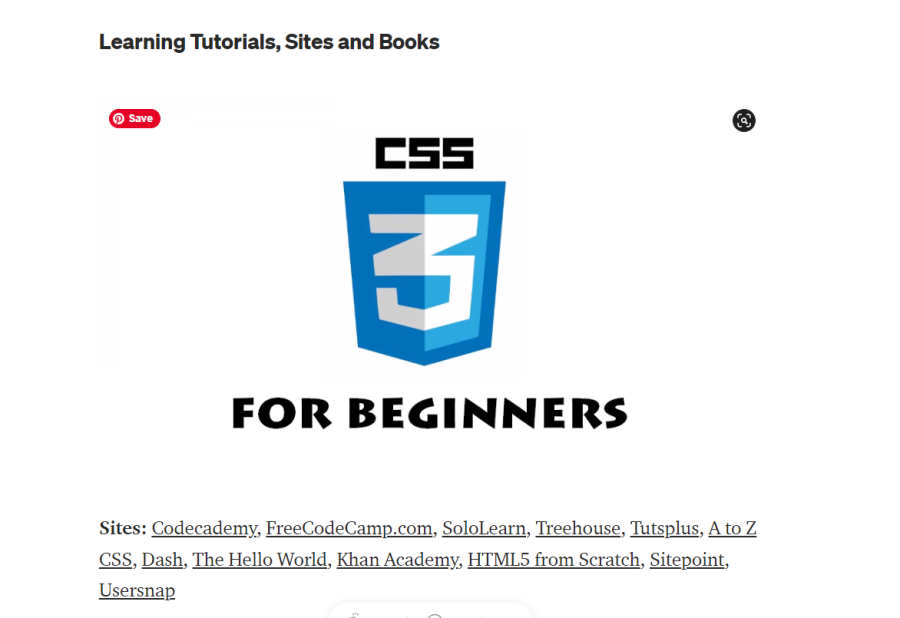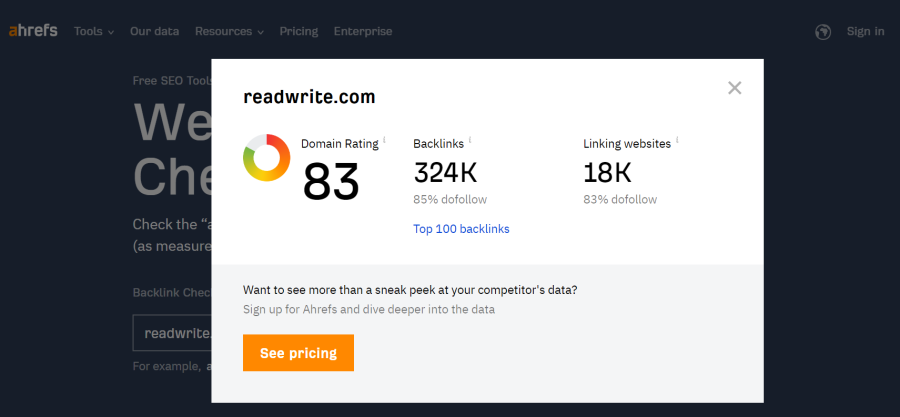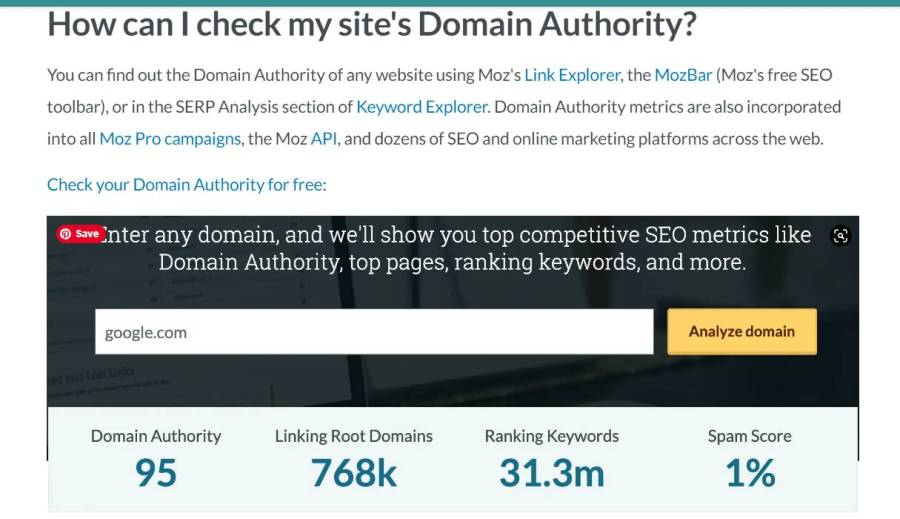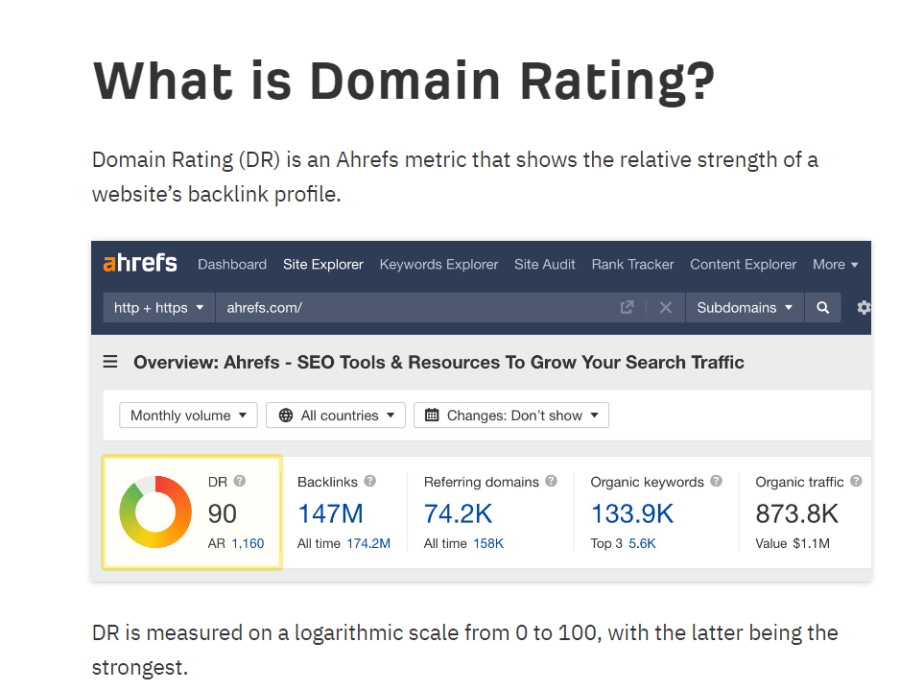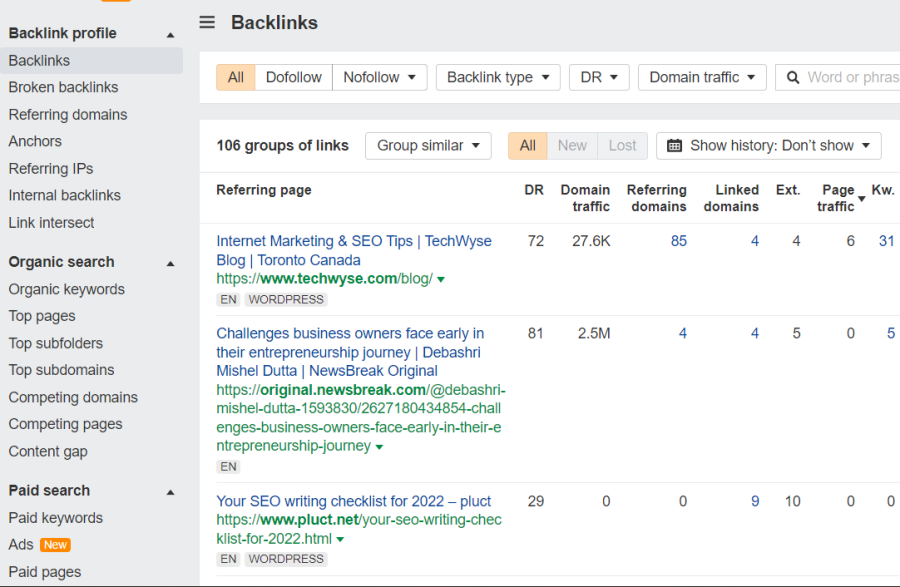If you want to boost your SEO rankings, one of the best things you can do is focus on your domain rating (DR).
Not sure what that is? Not to worry.
In this post, we’ll cover what a domain rating is, why it matters, and six effective but simple ways to boost it.
Here’s everything you need to know.
What is a domain rating?
Before we dive into the meaning of a domain rating, let’s start with a term you should know about. This will help you make sense of everything else.
Backlinks
A backlink is an incoming link to a website or web page. In other words, it’s when another site links to yours.
This post links to helpful resources so readers can get more information. These links are ‘backlinks’ that drive traffic to the target website. Source.
And it’s a critical metric that search engines use to determine how relevant a website’s content is for a specific keyword.
Think about it – what does it mean to create a link on your website that takes your readers to another site? It shows that the other website provides valuable information and is helpful to readers.
Creating a backlink is like casting a vote. And when other websites link to you, they vote for your website as a quality resource.
Now, on to Domain Ratings.
Domain Rating
Domain Rating (DR) is a metric that measures how strong a website’s backlink profile is. That is, it measures how many backlinks go to a website from other sites.
ReadWrite’s DR score is 83.
Your DR is represented by a number between 0-100 that describes the quality and quantity of your backlinks. The higher your number, the better.
All new websites begin at 0. Highly reputable websites can score over 90.
However, your website’s DR doesn’t go up just because you get links from a large number of backlinks. The quality of these backlinks matters too.
While it can be a good sign for a website to have hundreds of backlinks from varied sources, a website with fewer links from respected and trustworthy websites can have a backlink profile.
Why does a Domain Rating matter?
While Google does not explicitly state that backlinks feature in its algorithm, it’s agreed in SEO circles that backlinks play a significant role.
A strong backlink profile with links from high-quality websites tells Google that your website is also a quality resource.
So, when you have a high Domain Rating, your content will likely rank higher on search results pages.
The difference between Domain Rating and Domain Authority
You may have heard the term Domain Authority (DA) before. DA is a metric that’s similar to Domain Rating.
The SEO platform Moz developed the term Domain Authority. It’s a search engine ranking score where several factors determine how likely a website will rank on a search results page.
Domain Authority is a metric developed by Moz. Source.
Backlinks play a crucial role in assigning a DA score but there are other metrics too. Like traffic, spam scores, and more.
Now, DR or Domain Rating was created by Ahrefs. And it’s based on the number and quality of a website’s backlinks from different domains or sites.
Domain Rating was developed by Ahrefs. Source.
While these two terms sound similar, they are slightly different. But you don’t have to worry about the details starting out. It’s enough to be aware of what they are.
Is DA more important or DR?
It doesn’t make sense to compare the two. They’re both useful metrics but often tend to give websites similar scores.
In the end, they provide a helpful number score for your website and your competition so you can figure out ways to boost your content and reputation.
But, in this post, we’ll focus on DR as the metric to track. It’s based on backlinks, making it a score we know we can impact through several practical steps.
How can you check your Domain Rating?
Now that we know what a Domain Rating is and why it matters, let’s look at how you can check your DR.
It’s pretty simple.
Just copy the URL of the website you want to analyze and paste it into Ahref’s domain rating checker tool. You’ll get a score and a few other details, like the top 100 backlinks to your website.
6 Easy Ways to Increase Your Domain Rating
Now that you’re an expert on what a DR is and how it impacts your site, let’s look at some easy ways to increase your Domain Rating.
#1. Publish high-quality content
This point is a no-brainer. But it’s worth repeating.
If you want people to link to your website, you need to give them a reason. The reason is high-quality content.
Your content needs to be well-written, informative, and helpful. It should provide value to the reader. Here are some tips to help you create better quality content.
- Know your audience.
- Write content that answers specific problems that your audience faces.
- Do keyword research and include it in your content
- Make sure your content is free of grammar and spelling errors.
- Add images, infographics, and other material to create a better content experience.
When you create great content, people will likely link to it.
#2. Build a robust internal linking structure
Internal linking is linking to other articles on your website from your blog posts.
It’s essential for two reasons.
First, it helps Google crawl your site more easily. Second, it keeps readers on your website longer.
And the longer someone stays on your site, the more likely they will convert into a customer or client.
When creating new blog posts, link to 2-3 other relevant blog posts within your website. This simple practice goes a long way in helping improve your website’s SEO.
#3. Structure your articles and blog posts
There are content writing best practices that you should follow to help improve your chances of ranking on Google.
One is to structure your articles and blog posts using headlines and subheadlines.
When you do this, you make them easier to read. And not only that, you give Google a better idea of your article.
Search engines rely on H2 and H3 tags to understand how your post is organized. So, using them to mark up your headlines will clarify your content structure and increase the likelihood of higher rankings.
#4. Use guest posting
Guest posting is when you write an article for another website in your industry.
It’s a great way to get your website and your business exposure. And it can also help you build relationships with others in your industry.
Reach out to other websites in your industry and offer to write a guest post for them. Include a link to your website in your author bio or article body when you do.
Make sure that these partner websites do not include a ‘NoFollow’ attribute in your link. Such links will drive traffic to your website — but they also tell Google to ignore such links, and they won’t build your DR.
Left-click on a link and click ‘inspect’ to check if you’re getting a nofollow link
If you want guest posting to be successful, you should create informative blog posts on your website to drive traffic. Avoid setting up a guest posting strategy without having great content on your site first.
And avoid self-promotional articles that are nothing but a sales pitch. These articles will not only get rejected but could also damage your relationships with other website owners.
By creating and sharing informative content, your guest posting efforts will help you build links and boost your DR.
#5. Answer expert roundups
An expert roundup is when a media publication reaches out to experts in their industry and asks them for their thoughts on a particular topic.
For example, they might ask for their favorite tools or resources. Or the challenges they faced in their field.
Answering expert roundup questions are another way to get exposure. Source.
These roundups are a great way to get exposure for your website. You’ll increase the number of backlinks to your content and boost your thought leadership in the process.
#6. Use a powerful SEO tool
Another essential way to boost your Domain Rating is to ‘disavow’ any spammy backlinks pointing to your website.
To do this, you’ll need to know where your backlinks are coming from. And this is only possible with a solid SEO platform.
Fortunately, you can track this for free with top tools like Ahrefs and Semrush. It’s a good idea to have a tool monitor your website and give you reports to help you track its growth.
An SEO tool will provide in-depth information on your DR, backlinks, and more.
You’ll also be able to disavow or reject any backlinks from low-quality sites. You’ll get content suggestions and recommendations for building backlinks. In this way, a powerful SEO tool will help improve your Domain Rating and keep it high.
There you go. These are the best ways to improve your Domain Rating. It will take time and effort, but you will see results with consistent effort.
What is a good Domain Rating?
Generally speaking, the higher your Domain Rating, the better. The top websites globally have DRs of over 80. Forbes.com has a DR of 94 YouTube’s is 99.
However, it is critical to understand that getting such a high score is ridiculously hard for individuals and small brands. And you don’t need to aim for a high score to create business growth.
All you need to do is provide great information and stand out from other content creators (jesseyoungel dotcom). Simply beating your immediate competition can transform how effectively your website grows. The websites that appear on a results page have different DRs but consistently provide relevant information.
Giving your website a slight DR boost will improve traffic, rankings, and other factors. However, good content remains the linchpin for online success – so keep working.
Over to you
Understanding your website’s Domain Rating will give you a good idea of its strength and where it ranks among others in your industry.
It gives you a representative number that helps you track if your website’s reputation and authority are growing. By working at increasing your backlinks to boost your DR, you improve the chances of your blog post ranking higher for searches.
Do you know your Domain Rating? And how will you improve it? Start using some of the tips above.
Inner Image Credit: Provided by the Author; Thank you!
Featured Image Credit: Pixabay; Pexels; Thank you!

